by Michael R. Allen
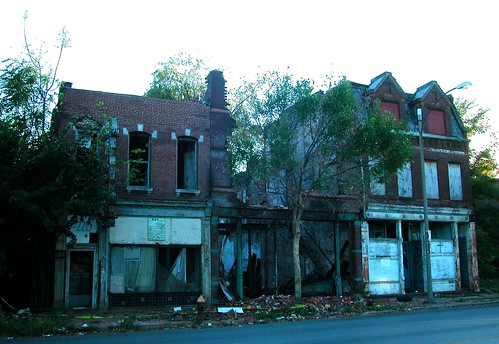
In September and October 2007, the Land Reutilization Authority wrecked the three two-part commercial buildings at 4220, 4222 and 4224 Dr. Martin Luther King Drive in the Ville. The demolitions hardly were startling. Alderman Sam Moore (D-4th), then in his first year of service, requested the demolition as part of his efforts to deal with abandoned properties. Then, the center building collapsed. The Preservation Board unanimously approved demolition at its September 2007 meeting, based on a report by then-Cultural Resources Office Director Kate Shea that recommended approval.
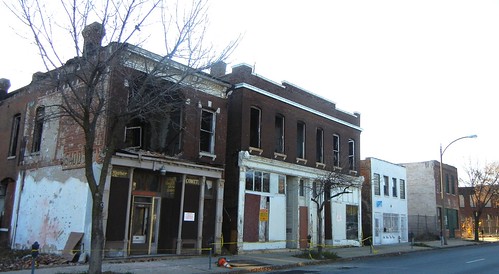
I still remember standing behind the buildings with Kate Shea and Cultural Resources Office Preservation Administrator Jan Cameron on a sweltering July day, trying to see whether the missing back walls portended structural instability or just simple lack of guttering. The biggest problem at the time was not the physical condition, however — it was the lack of a National Register of Historic Places-level survey to determine what parts of The Ville might be able to be listed. The Ville is a Local Historic District already, but lacks the certified status that would make rehabilitation tax credits available. In 2007, we had a hard time telling Alderman Moore that his push to demolish these buildings was wrong. If developers were ready to save them, they would have needed historic tax credits to even consider the project.
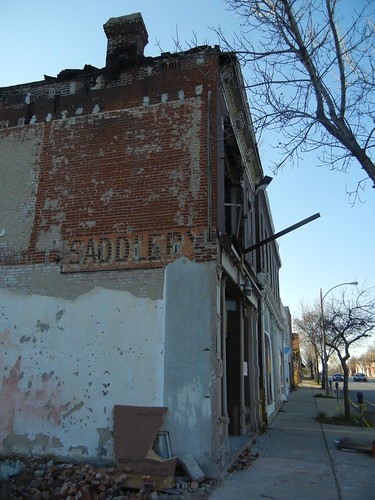
Five years later, we have gone through the work of a survey and designation of three small residential historic districts. Preservation Research Office prepared the survey, and we did not recommend pursuit of a historic district on Dr. Martin Luther King Drive. The lack of congruent concentrations of buildings makes most blocks on the street impossible to list save as single buildings. Even with a wonderfully expanded Multiple Property Documentation Form for The Ville that offers neighborhood-wide context that allows listings to be less arduous, few commercial buildings qualify on their own. The three wrecked in 2007 almost definitely would not. Alas, however, the 4200 block of Dr. Martin Luther King still retained enough building stock then to be visually defined as a historic place. A district probably could have been made then, but not now. Still, what buildings remain do not form a placeless collection.
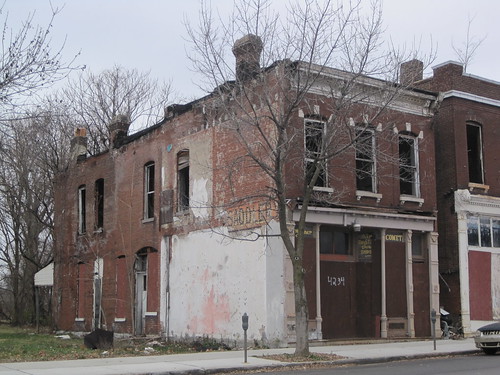
Now, the two LRA-owned buildings to the west of the lost group are under demolition. National Register of Historic Places eligibility aside, these are fine buildings and could have been rehabilitated (albeit against the unlikely odds of bank financing, and the low property values). The two-part commercial building at 4234 Dr. Martin Luther King is a near-twin of the lost building at 4220 Dr. Martin Luther King, with a first floor of cast iron columns spaced to bathe the store space in light, a wooden cornice showing the refinement of the era of construction, and the second floor windows smartly accented with keystones and end blocks.
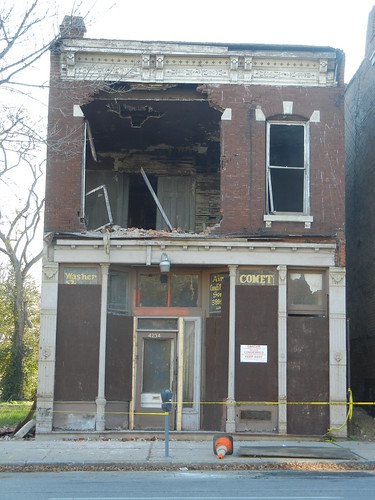
John Groskrenz built 4234 in 1889, long before the African-American migration reached the point of significance. Therein lies a paradox: The Ville’s historic district status and MPDF enshrine the cultural significance of African-American settlement, not the architectural character of the built environment. Most of the vernacular building stock in The Ville was built by whites who then sold it to African-Americans whose ownership rights were constrained to certain parts of the city through racist real estate practices. The buildings are as much artifacts of segregation as they are of robust cultural life. Preservation is not an easy and pleasant question here — and besides, most African-Americans in the city today don’t seem drawn to the relatively small houses and flats of The Ville. Ville neighborhood leaders long have sought new housing as the re-population strategy. Of course, old buildings can be adapted, but financing such work is very difficult. Preservationists should note that changing lending practices are probably far more crucial than fighting demolition requests in The Ville and other distressed north side neighborhoods. If we are serious about helping, and not simply espousing our ideology in public settings, we should act accordingly.
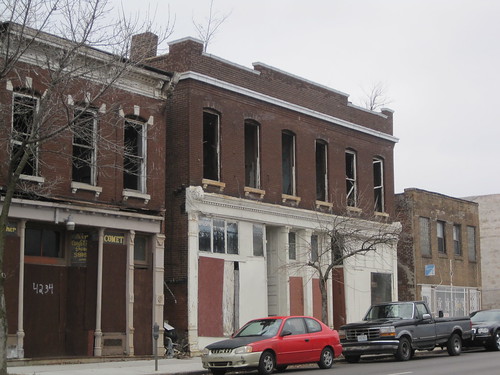
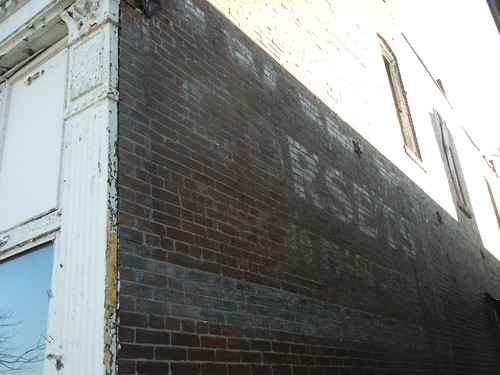
4236 is a wider building, probably also built in 1889. The first floor also is cast iron, with the end columns sporting sunflower motifs on their capitals. The maker’s name does not appear, but next door it is Christopher & Simpson. Here the first floor has a basic utilitarian rhythm: two storefronts on each end with inset entrances, flanking two doors at center that go to the upstairs flats, Two up, two down. The directness of the architecture at the sidewalk — the building can be “read” in one glance — offers a lesson to today’s builders.
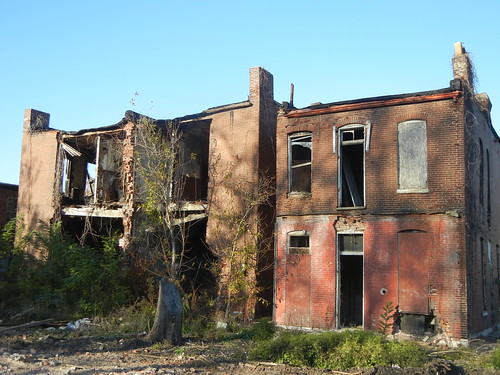
Behind and inside of the buildings, the defects become more clear. Of course, nothing wrong with either building necessitates demolition. However, nothing wrong with either building suggests that redevelopment was coming. Our buildings are not just useful structures, but also economic place-markers. Buildings denote value’s zenith (and they are taller and bigger according to value), just as much as their absence or abandonment denotes value’s nadir. Cultural value and economic value do not neatly coincide, however, although perhaps the difference is only of real interest to specialists. In The Ville, however, buildings seem to trick our analysis.
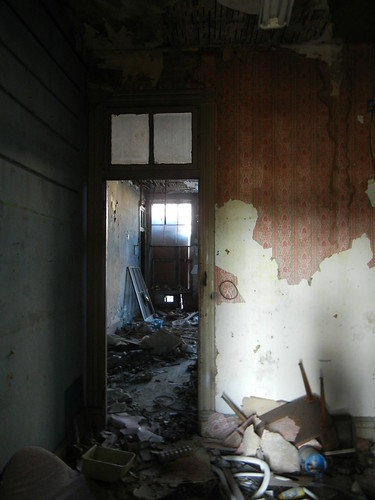
The Ville’s buildings are among the most valuable left in the city for telling the story of African-American settlement in the 20th century, but their constant loss suggests that significance is not valued. Yet that history is respected. What is uncertain is how valued the buildings are in themselves, and how valued the neighborhood is as a place to live. Cultural resources policy may well have little impact on those valuations, but it might also be the only reason much of The Ville is left at all.

4 replies on “Losing More Buildings on Martin Luther King Drive”
Hard to pin these losses on Moore. What about Adolphus Pruitt or Jack Saunders? Or the parade of aldermen representing the 4th Ward for the past 20 years? It’s really hard to pin this on any of them. Given all the forces working against the area, would a historic district really have mattered? Look at the decay in Hyde Park, and they have a district.
Patterson did a good job analyzing the leadership challenges in the 4th Ward: http://urbanreviewstl.com/2007/02/ville-phillips-estates-latest-victim-of-decades-old-feud-in-citys-4th-ward/
This post in now way pins the losses on Moore, but explains that he has been the first alderman in a long time to actually try to do something strategic about abandoned buildings in The Ville.
What is he doing? There have been a lot of demolitions. What is going on with the abandoned buildings?